TE2Rules is a technique to explain Tree Ensemble models (TE) like XGBoost, Random Forest, trained on a binary classification task, using a rule list. The extracted rule list (RL) captures the necessary and sufficient conditions for classification by the Tree Ensemble. The algorithm used by TE2Rules is based on Apriori Rule Mining. For more details on the algorithm, please check out our paper.
TE2Rules provides a ModelExplainer which takes a trained TE model and training data to extract rules. The training data is used for extracting rules with relevant combination of input features. Without data, an explainer would have to extract rules for all possible combinations of input features, including those combinations which are extremely rare in the data.
TE2Rules package is available on PyPI and can be installed with pip:
pip install te2rulesThe official documentation of TE2Rules can be found at te2rules.readthedocs.io.
TE2Rules contains a ModelExplainer class with an explain() method which returns a rule list corresponding to the positive class prediciton of the tree ensemble. While using the rule list, any data instance that does not trigger any of the extracted rules is to be interpreted as belonging to the negative class. The explain() method has tunable parameters to control the interpretability, faithfulness, runtime and coverage of the extracted rules. These are:
-
min_precision:min_precisioncontrols the minimum precision of extracted rules. Setting it to a smaller threshold, allows extracting shorter (more interpretable, but less faithful) rules. By default, the algorithm uses a minimum precision threshold of 0.95. -
num_stages: The algorithm runs in stages starting from stage 1, stage 2 to all the way till stage n where n is the number of trees in the ensemble. Stopping the algorithm at an early stage results in a few short rules (with quicker run time, but less coverage in data). It is recommended to try running 2 or 3 stages. By default, the algorithm explores all stages before terminating. -
jaccard_threshold: This parameter (between 0 and 1) controls how rules from different node combinations are combined. As the algorithm proceeds in stages, combining two similar rules from the previous stage results in yet another similar rule in the next stage. This is not useful in finding new rules that explain the model. Settingjaccard_thresholdto a smaller value, speeds up the algorithm by only combining dissimilar rules from the previous stages. By default, the algorithm uses a jaccard threshold of 0.20.
For evaluating the performance of the extracted rule list, the ModelExplainer provides a method get_fidelity() which returns the fractions of data for which the rule list agrees with the tree ensemble. get_fidelity() returns the fidelity on positives, negatives and overall fidelity.
The following notebook shows a typical use case of TE2Rules on Adult Income Data. The notebook can be found here. Let us start with importing te2rules and other relevant libraries
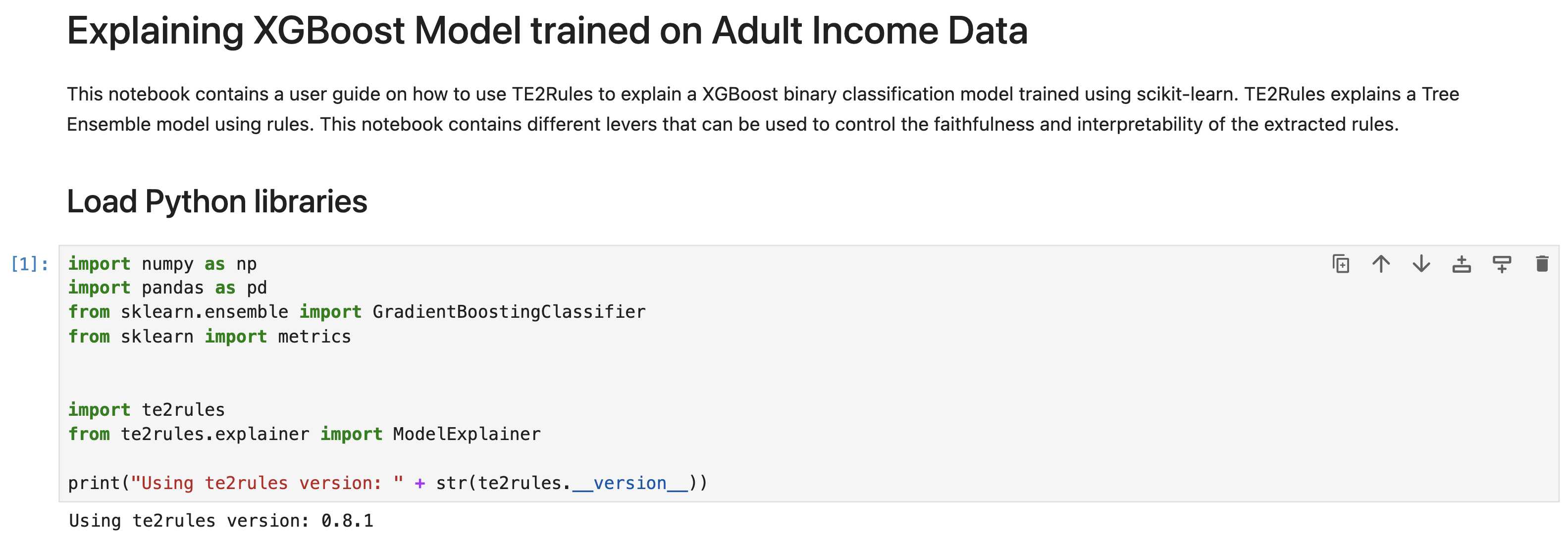
Let us load the training and testing data. All the data used in this notebook are preprocessed already and can be found here. The data can also be generated by running python3 data_prep/data_prep_adult.py.
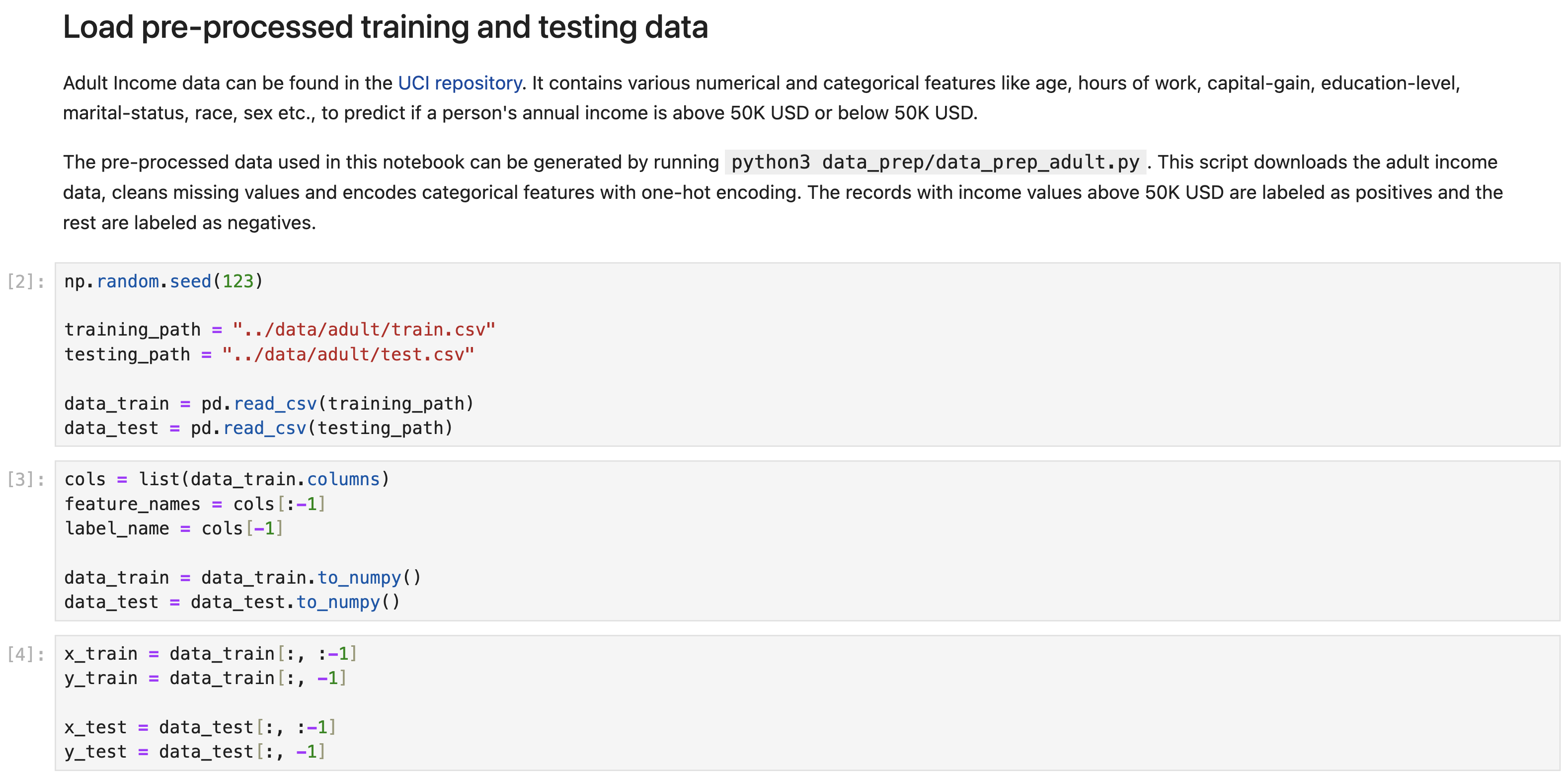
The tree ensemble model used in this notebook is a XGBoost model with 10 trees.
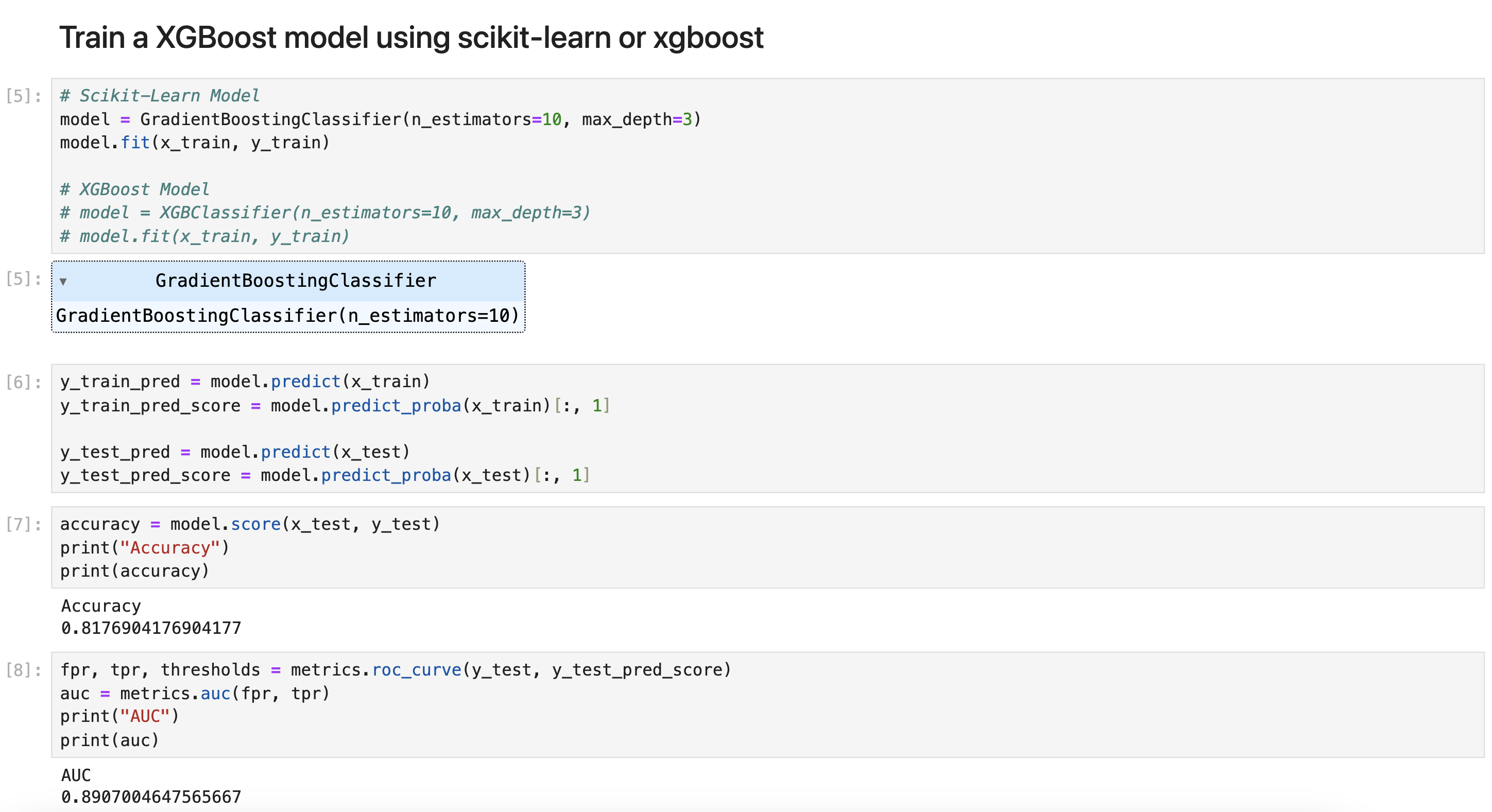
Let us use TE2Rules ModelExplainer to explain the positive class prediciton by the XGBoost model. We observe that TE2Rules extracts 5 rules to explain more than 99% of the positive class prediction by the tree ensemble model. In this usgae, we use the default values of min_precision (0.95) and num_stages (10), since the algorithm runs quickly for a tree ensemble with 10 trees.
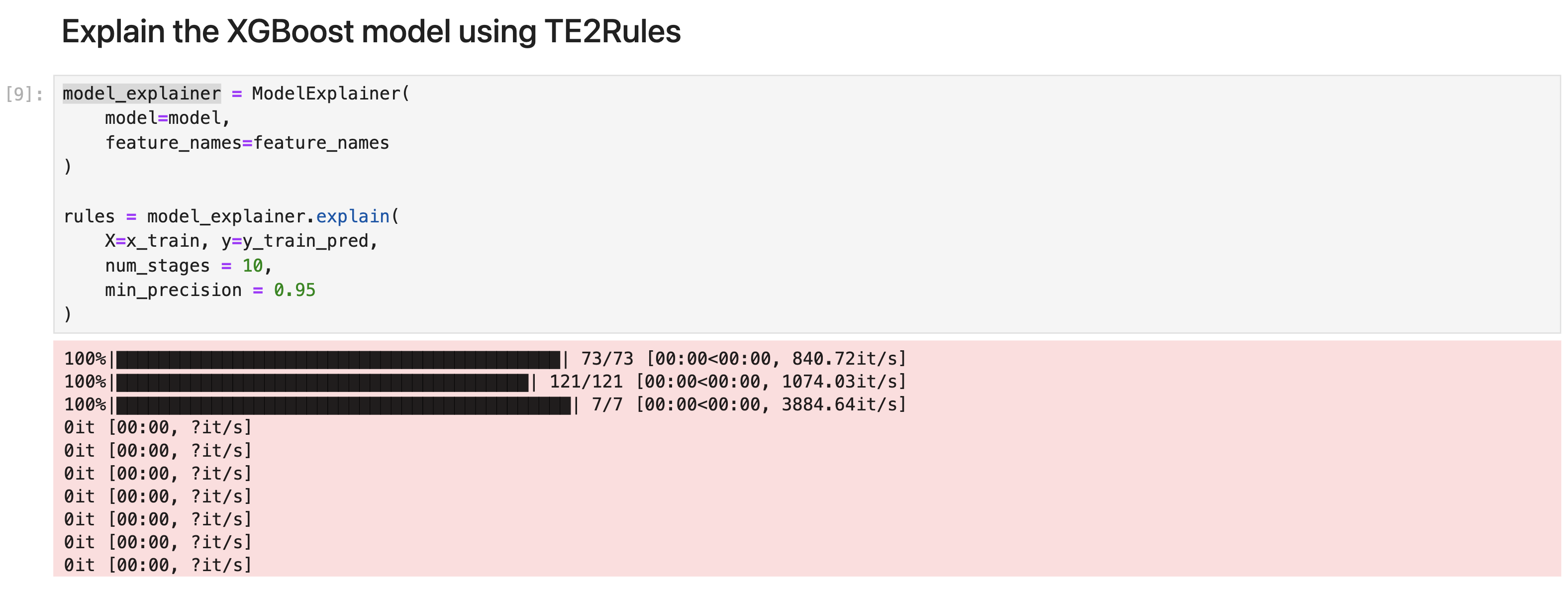
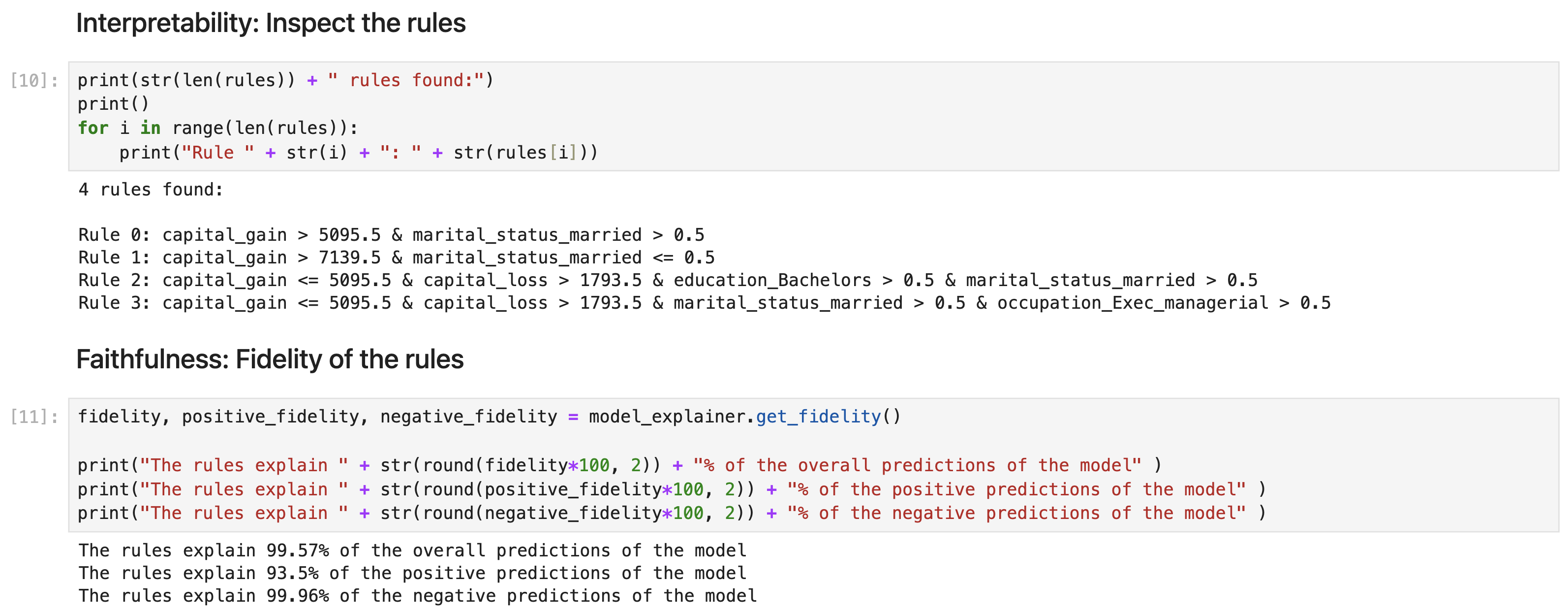
Run the follwing python scripts to generate the results in the paper:
python3 demo/demo/run_te2rules.py
python3 demo/demo/run_defrag.py
python3 demo/demo/run_intrees.py
python3 plot_performance.py
python3 plot_scalability.pyCreative Commons Attribution-NonCommercial 4.0 International Public License, see LICENSE for more details.
Please cite TE2Rules in your publications if it helps your research:
@article{te2rules2022,
title={TE2Rules: Explaining Tree Ensembles using Rules},
author={Lal, G Roshan and Chen, Xiaotong and Mithal, Varun},
journal={arXiv preprint arXiv:2206.14359},
year={2022}
}



